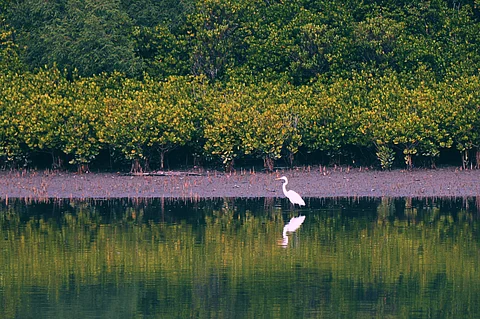
- Destinations
- Experiences
- Stay
- What's new
- Celebrating People
- Responsible Tourism
- CampaignsCampaigns
- SubscribeSubscribe
- Buy Now

The Forest Department in West Bengal has imposed a three-month ban on the entry of all people, including tourists, into the Sundarbans to facilitate the breeding and movement of fish and wildlife.
The restriction, which aims to ensure the natural reproduction cycles of the forest's wildlife, will be effective from June 1 to August 31.
According to forest officials, the annual restriction helps maintain ecological balance and revitalises the forest's wildlife and biodiversity.
“If we can keep the forest quiet during this period, it will significantly enhance breeding activities, especially for aquatic species,” said Mohammad Rezaul Karim Chowdhury, the divisional forest officer (DFO) of the Sundarbans East Forest Division, to media.
“We will increase patrols throughout this time. If the ban is effectively implemented, the fish population and overall wildlife in the forest will thrive.”
However, the temporary closure on visiting Sundarbans has triggered severe hardship for forest-dependent communities, who cannot enter the forest to fish, collect honey, or harvest crab until August 31.
Although sea fisherfolk receive assistance from the Department of Fisheries during this seasonal restriction, forest-dependent fishing communities in the Sundarbans reportedly do not receive any support.
According to the Shyamnagar Upazila Fisheries Office, there are 23,928 registered fisherfolk in the area, but only 8,324 of them are receiving government assistance.
Each beneficiary is allocated 77 kg of rice over the three-month ban period, distributed in two phases. Fisherfolk have complained of irregularities and corruption in both the allocation and distribution of aid.
Meanwhile, environmentalists and locals have voiced concern that illegal intrusions and poaching activities could undermine the purpose of the ban. Locals have urged the Forest Department to strengthen surveillance during the restriction period.
Environmental activists also alleged that some fisherfolk always manage to enter the forest with the help of complicit officials during the restricted period, and called for stricter monitoring to prevent such breaches.
The Sundarbans, a UNESCO World Heritage Site, is home to a rich diversity of flora and fauna, including the Bengal tiger, spotted deer, monkeys, crocodiles, monitor lizards, and various bird and fish species.
It is the home of 289 terrestrial animal species, including 42 mammals, 35 reptiles, eight amphibians, 219 aquatic species, 290 bird species and 344 plant species. Among them, two amphibians, 14 reptiles, 25 birds and five mammal species are currently at risk.
The breeding season for most aquatic species in the Sundarbans falls between June and July. Earlier, based on the recommendations of the Integrated Resources Management Plan (IRMP), the forest remained closed from July 1 to August 31.
Since 2022, the schedule has been adjusted in coordination with the Department of Fisheries to start the restriction from June 1.
(With inputs from a news report)
